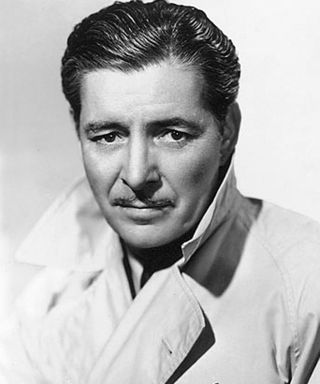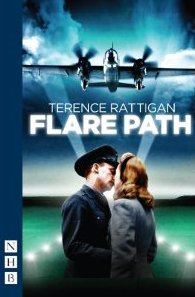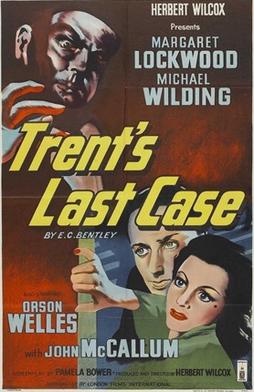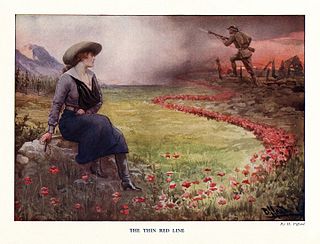
Ronald Charles Colman was an English-born actor, starting his career in theatre and silent film in his native country, then emigrating to the United States and having a highly successful Hollywood film career. He starred in silent films and successfully transitioned to sound, aided by a distinctive, pleasing voice. He was most popular during the 1920s, 1930s and 1940s. He received Oscar nominations for Bulldog Drummond (1929), Condemned (1929) and Random Harvest (1942). Colman starred in several classic films, including A Tale of Two Cities (1935), Lost Horizon (1937) and The Prisoner of Zenda (1937). He also played the starring role in the Technicolor classic Kismet (1944), with Marlene Dietrich, which was nominated for four Academy Awards. In 1947, he won an Academy Award for Best Actor and Golden Globe Award for Best Actor for the film A Double Life.

Tarzan Escapes is a 1936 Tarzan film based on the character created by Edgar Rice Burroughs. It was the third in the Metro-Goldwyn-Mayer Tarzan series to feature Johnny Weissmuller as the "King of the Apes". Previous films were Tarzan the Ape Man (1932) and Tarzan and His Mate (1934), with Jane's bikini-like attire and the famous skinny-dipping sequence. Weissmuller and O'Sullivan starred together in three more Tarzan films, Tarzan Finds a Son! (1939), Tarzan's Secret Treasure (1941) and Tarzan's New York Adventure (1942).

Lady Godiva Rides Again is a 1951 British comedy film starring Pauline Stroud, George Cole and Bernadette O'Farrell, with British stars in supporting roles or making cameo appearances. It concerns a small-town English girl who wins a local beauty contest by appearing as Lady Godiva, then decides to pursue a higher profile in a national beauty pageant and as an actress.

Benita Hume was an English theatre and film actress. She appeared in more than 40 films from 1925 to 1955.
The House of the Arrow is a 1930 British mystery film directed by Leslie S. Hiscott and starring Dennis Neilson-Terry, Benita Hume and Richard Cooper. It was based on the 1924 book The House of the Arrow, and its subsequent stage play adaptation by A.E.W. Mason, part of his Inspector Hanaud series. It was one of four film adaptations of the story. It was made at Twickenham Studios. A quota quickie, it was distributed by the American company Warner Brothers. A separate French-language version La Maison de la Fléche was also produced at Twickenham directed by Henri Fescourt.

Balaclava is a 1928 British silent and sound war film directed by Maurice Elvey and Milton Rosmer and starring Cyril McLaglen, Benita Hume, Alf Goddard, Harold Huth, and Wally Patch. It was made by Gainsborough Pictures with David Lean working as a production assistant. The charge sequences were filmed on the Long Valley in Aldershot in Hampshire. Although the sound version had no audible dialogue, it featured a synchronized musical score with sound effects. The sound version was released in the United States under the title Jaws Of Hell.

Flare Path is a play by Terence Rattigan, written in 1941 and first staged in 1942. Set in a hotel near an RAF Bomber Command airbase during the Second World War, the story involves a love triangle between a pilot, his actress wife and a famous film star. The play is based in part on Rattigan's own wartime experiences, and was significantly reworked and adapted for film as The Way to the Stars.

Trent's Last Case is a 1952 British detective film directed by Herbert Wilcox and starring Michael Wilding, Margaret Lockwood, Orson Welles and John McCallum. It was produced by Wilcox as part of a distribution agreement with Republic Pictures. It was based on the 1913 novel Trent's Last Case by E. C. Bentley, and had been filmed previously in the UK with Clive Brook in 1920, and in a 1929 US version.

The Wrecker is a 1929 British-German sound crime film directed by Géza von Bolváry and starring Carlyle Blackwell, Joseph Striker, and Benita Hume. While the film has no audible dialog, it was released with a synchronized musical score with sound effects. The film was based on the play of the same title by Arnold Ridley. It was produced by Michael Balcon for Gainsborough Pictures in a co-production with the German firm Felsom Film.
A South Sea Bubble is a 1928 British silent comedy adventure film directed by T. Hayes Hunter and starring Ivor Novello, Benita Hume and Alma Taylor. The screenplay concerns a group of adventurers who head to the Pacific Ocean to hunt for buried treasure. It was made at Islington Studios.
Symphony in Two Flats is a 1930 British drama film directed by Gareth Gundrey and starring Ivor Novello, Benita Hume, Jacqueline Logan and Cyril Ritchard. It was an adaptation of a successful 1929 West End play of the same title written by Novello. Separate versions were made for the United Kingdom and United States releases, with Jacqueline Logan replacing Benita Hume in the American version.

Discord is a 1933 British drama film directed by Henry Edwards and starring Owen Nares, Benita Hume and Harold Huth. Its plot involves a struggling composer who has to be supported financially by his wealthier wife. It was based on the play A Roof and Four Walls by E. Temple Thurston. It was made at British and Dominion Elstree Studios for release by Paramount Pictures.
The Happy Ending is a 1931 British drama film directed by Millard Webb and starring George Barraud, Daphne Courtney and Alfred Drayton. Its plot concerns a father who deserted his family some years before returning home only to find his wife has told his children and neighbours that he died as a hero when he abandoned them. A silent version, of The Happy Ending had been made in 1925 based on the same play by Ian Hay. It was made at Lime Grove Studios. The film's sets were designed by Andrew Mazzei.

A Honeymoon Adventure is a 1931 British thriller film directed by Maurice Elvey and starring Benita Hume, Peter Hannen and Harold Huth. Written in collaboration by Rupert Downing and Basil Dean, it The film was shot at Beaconsfield Studios. Location shooting, including the railway scenes took place in Scotland.
The Clue of the New Pin is a 1929 all-talking sound British crime film directed by Arthur Maude and starring Benita Hume, Kim Peacock, and Donald Calthrop. The soundtrack was recorded using the British Phototone sound-on-disc system. It was made at Beaconsfield Studios. This film is important historically as being Britain's first all-talking feature film produced entirely in Britain. The very first all-talking British feature production, a film entitled Black Waters, had been produced in the United States due to a lack of sound recording equipment in Britain.
The House Opposite is a 1931 British crime film directed by Walter Summers and starring Henry Kendall, Frank Stanmore and Arthur Macrae. It was shot at Elstree Studios outside London. It was based on the 1931 novel The House Opposite by Joseph Jefferson Farjeon. It follows a police officer who pursues a gang of blackmailers.
The Flying Fool may refer to:

Harold Hume Piffard was a British artist, illustrator, and one of the first British aviators. He studied art at the Royal Academy Schools in London, exhibiting his first painting at the Royal Academy in 1895. He painted a wide variety of subjects in oils and watercolour, including history paintings. At the same time he worked as an illustrator, both for periodicals such as The Strand Magazine and The Illustrated London News, and illustrating novels. From 1907 he became interested in aviation, and began flying in 1909 in an aircraft he built himself. He made his first flights in West London near his Chiswick home; in 1910 he flew at Shoreham-by-Sea, near his old school, Lancing College.
A Wife or Two is a 1936 British comedy film directed by Maclean Rogers and starring Henry Kendall, Nancy Burne and Betty Astell. It was made as a quota quickie at Beaconsfield Studios.
The Flying Fool is a 1929 thriller play by the British writer Arnold Ridley and Bernard Merivale. It enjoyed a successful run in the West End.











